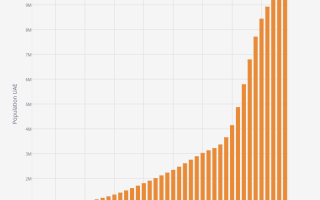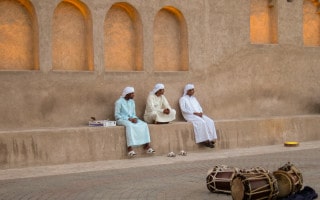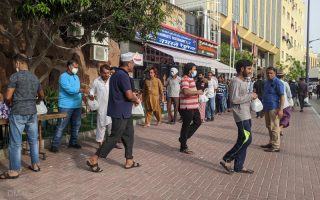The city of Dubai is a bustling metropolis that is home to a diverse population. From its humble beginnings as a fishing village in the 19th century, it has grown into a thriving city that is home to people from all over the world.
Current Population Statistics
According to the Dubai Statistics Center (part of the Government of Dubai) the current resident population of Dubai is 3,751,164 (figure last updated on Thursday 25th of July 2024).
It is the most populated city in the United Arab Emirates (UAE), surpassing Abu Dhabi which is the largest emirate by area. The majority of the population are expatriates.
The city has seen a population boom in recent years, due in part to its rapidly growing economy. The growth is expected to continue in the coming years.
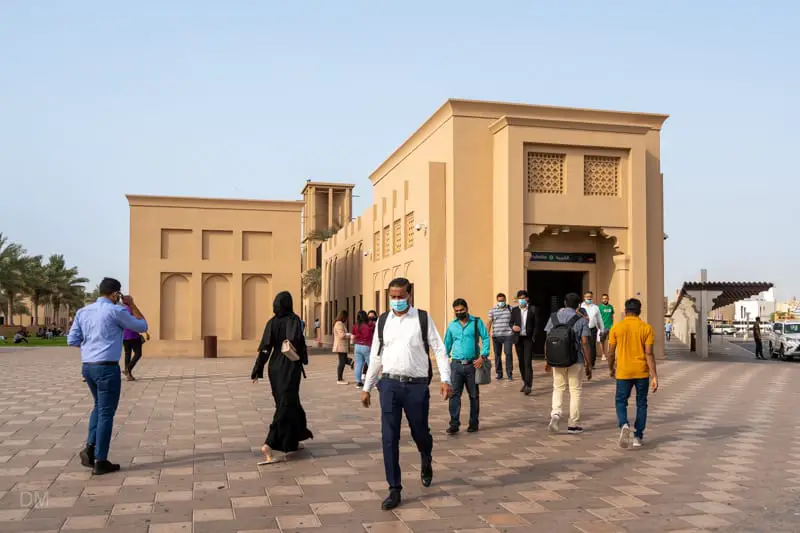
Active Daytime Population
The active daytime population is much higher than the resident population. This is because the city is a major hub for business and tourism.
Every day, Dubai workers who live outside the city commute in. Many live in the neighbouring Emirate of Sharjah where rents are significantly cheaper.
The city also attracts huge numbers of tourists from all around the world. Popular source markets include India, Oman, Saudi Arabia, Russia, and the UK. Annual tourist numbers far exceed the local population size.
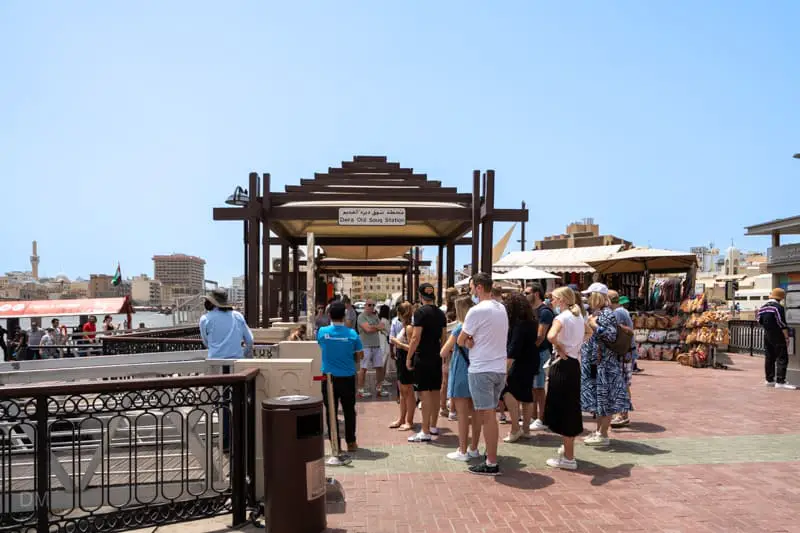
The table below shows the resident, temporary, and active daytime (resident + temporary) population by year from 2016 to 2021.
| Year | Permanent Residents | Temporary Residents | Active Daytime Population | Increase/(Decrease) | Increase/(Decrease) % |
|---|---|---|---|---|---|
| 2016 | 2,698,600 | 1,110,000 | 3,808,600 | ||
| 2017 | 2,976,455 | 1,186,565 | 4,163,020 | 354,420 | 9.31 |
| 2018 | 3,192,275 | 1,190,000 | 4,382,275 | 219,255 | 5.27 |
| 2019 | 3,355,900 | 1,196,000 | 4,551,900 | 169,625 | 3.87 |
| 2020 | 3,411,200 | 1,009,170 | 4,420,370 | {131,530} | {2.89) |
| 2021 | 3,478,300 | 1,063,375 | 4,541,675 | 121,305 | 2.74 |
The COVID-19 pandemic had had a significant impact on the active daytime population. In 2020, the number of tourists and workers decreased sharply as a result of the pandemic, leading to a decrease in the active daytime population.
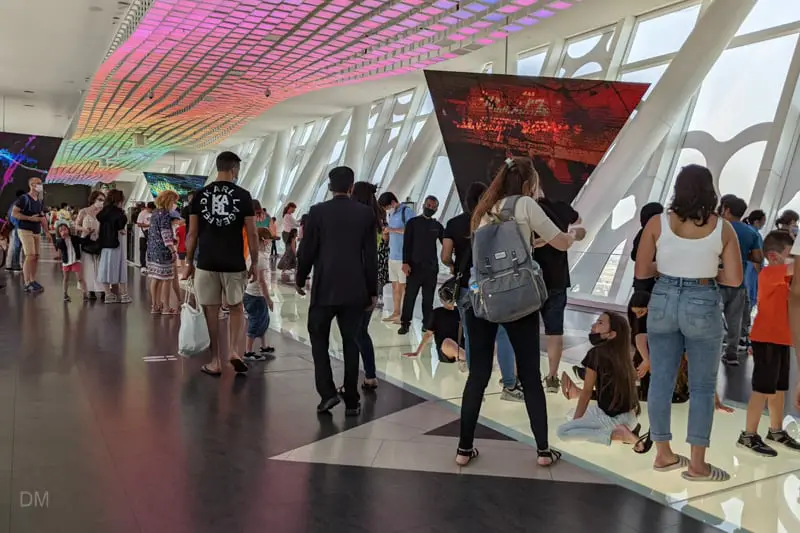
However, the population began to increase in 2021, although at a slower rate than the pre-pandemic increases. This is because many workers had not yet returned to the city and tourism had not fully recovered.

Demographics – Nationalities, Males and Females
According to the Dubai Statistics Center, at the end of 2021, only about 8 per cent of Dubai’s resident population were Emirati citizens. The rest were expatriates, drawn to the city from other countries in search of work or opportunity.
While the Dubai Statistics Center does not give a detailed breakdown of the city’s population by nationality, the United Nations estimates that 40 per cent of the total number of migrants in the UAE are from India. Other large groups making up the UAE population are from Bangladesh, Pakistan, Egypt, and the Philippines. The Western expatriate population includes those from the UK, France, and the US. As Dubai has the largest population in the UAE, it is safe to say that the Dubai statistics will be similar.

This diversity is one of the things that makes Dubai such an exciting and vibrant place to live. With so many different cultures represented, there is always something new to learn and experience.
| Year | Males | Females | Total | % Males | % Females |
|---|---|---|---|---|---|
| 1975 | 128,821 | 54,366 | 183,187 | 70.32 | 29.68 |
| 1980 | 187,714 | 88,587 | 276,301 | 67.94 | 32.06 |
| 1985 | 247,179 | 123,609 | 370,788 | 66.66 | 33.34 |
| 1993 | 406,128 | 204,798 | 610,926 | 66.48 | 33.52 |
| 1995 | 478,209 | 211,211 | 689,420 | 69.36 | 30.64 |
| 2000 | 611,799 | 250,588 | 862,387 | 70.94 | 29.06 |
| 2005 | 989,305 | 332,148 | 1,321,453 | 74.86 | 25.14 |
| 2006 | 1,073,485 | 348,327 | 1,421,812 | 75.50 | 24.50 |
| 2007 | 1,164,576 | 365,216 | 1,529,792 | 76.13 | 23.87 |
| 2008 | 1,263,130 | 382,843 | 1,645,973 | 76.74 | 23.26 |
| 2009 | 1,369,740 | 401,238 | 1,770,978 | 77.34 | 22.66 |
| 2010 | 1,485,046 | 420,430 | 1,905,476 | 77.94 | 22.06 |
| 2011 | 1,515,770 | 487,400 | 2,003,170 | 75.67 | 24.33 |
| 2012 | 1,547,135 | 558,740 | 2,105,875 | 73.47 | 26.53 |
| 2013 | 1,579,145 | 634,700 | 2,213,845 | 71.33 | 28.67 |
| 2014 | 1,613,175 | 714,175 | 2,327,350 | 69.31 | 30.69 |
| 2015 | 1,703,355 | 743,320 | 2,446,675 | 69.62 | 30.38 |
| 2016 | 1,888,520 | 810,080 | 2,698,600 | 69.98 | 30.02 |
| 2017 | 2,088,870 | 887,585 | 2,976,455 | 70.18 | 29.82 |
| 2018 | 2,233,390 | 958,885 | 3,192,275 | 69.96 | 30.04 |
| 2019 | 2,331,800 | 1,024,100 | 3,355,900 | 69.48 | 30.52 |
| 2020 | 2,362,255 | 1,048,945 | 3,411,200 | 69.25 | 30.75 |
| 2021 | 2,400,100 | 1,078,200 | 3,478,300 | 69.00 | 31.00 |
At the end of 2021, 69 per cent of the permanent resident population was male and 31 per cent female. This gender distortion is largely due to the large number of foreign male workers who do not relocate with their families. Many of these workers are construction workers, typically living in labour camps.
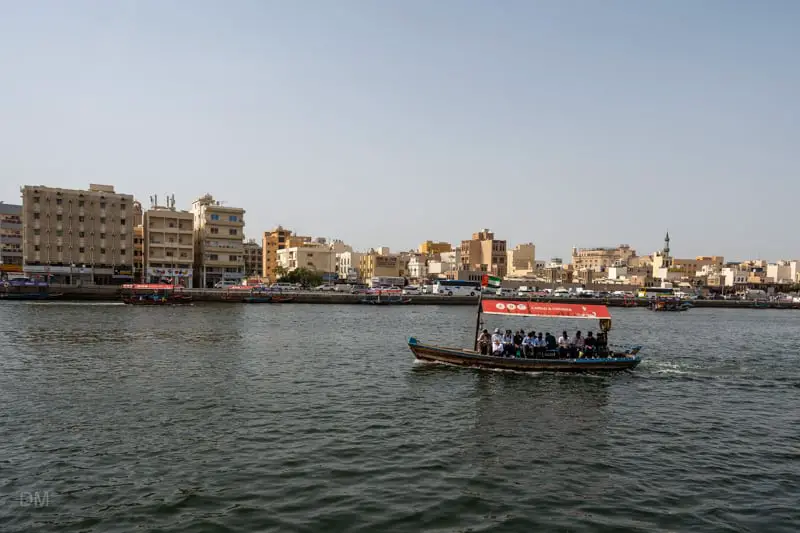
The city has always been a magnet for foreign workers, drawn by the promise of higher wages and better opportunities than in their home countries. Much of the work is in construction, a male-dominated industry. Many of these jobs are low-paid so these workers are less likely to bring their families with them when they relocate to Dubai. This has led to a low female population and a disproportionately male city.
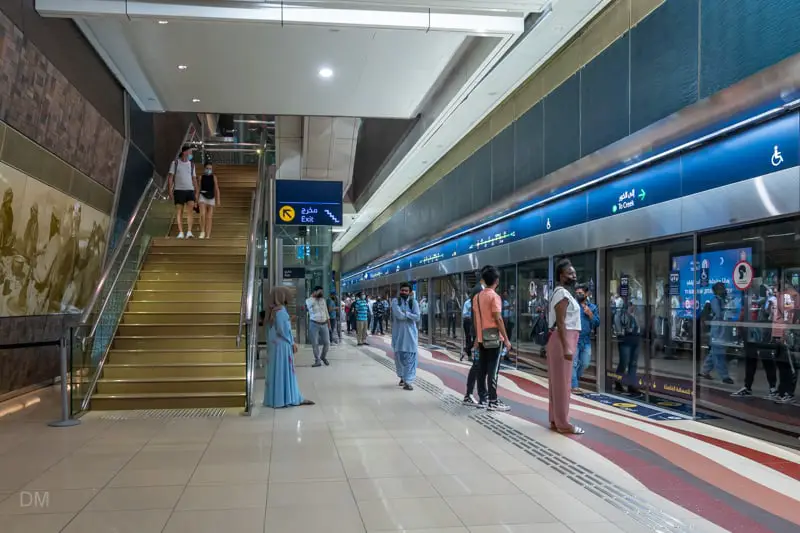
Demographics – Age Groups
At the end of 2021, 43 per cent of the population of Dubai was concentrated in the 25-44 male age group. This unnatural age and gender distribution were due to the large proportion of foreign workers in the city, most of whom are working-age males.

| Age Group | Males | Females | Total | Total % | Male % of Total | Female % of Total |
|---|---|---|---|---|---|---|
| 0 - 4 | 95,803 | 88,852 | 184,655 | 5.31 | 2.75 | 2.55 |
| 5 - 9 | 88,789 | 90,343 | 179,132 | 5.15 | 2.55 | 2.60 |
| 10 - 14 | 77,240 | 75,633 | 152,873 | 4.40 | 2.22 | 2.17 |
| 15 - 19 | 60,568 | 55,529 | 116,097 | 3.34 | 1.74 | 1.60 |
| 20 - 24 | 194,242 | 78,347 | 272,589 | 7.84 | 5.58 | 2.25 |
| 25 - 29 | 427,584 | 149,207 | 576,791 | 16.58 | 12.29 | 4.29 |
| 30 - 34 | 462,090 | 161,278 | 623,368 | 17.92 | 13.28 | 4.64 |
| 35 - 39 | 329,920 | 134,322 | 464,242 | 13.35 | 9.49 | 3.86 |
| 40 - 44 | 277,686 | 92,491 | 370,177 | 10.64 | 7.98 | 2.66 |
| 45 - 49 | 183,556 | 53,173 | 236,729 | 6.81 | 5.28 | 1.53 |
| 50 - 54 | 83,657 | 41,774 | 125,431 | 3.61 | 2.41 | 1.20 |
| 55 - 59 | 66,527 | 26,512 | 93,039 | 2.67 | 1.91 | 0.76 |
| 60 - 64 | 29,095 | 14,200 | 43,295 | 1.24 | 0.84 | 0.41 |
| 65 - 69 | 13,301 | 6,301 | 19,602 | 0.56 | 0.38 | 0.18 |
| 70 - 74 | 4,524 | 4,476 | 9,000 | 0.26 | 0.13 | 0.13 |
| 75 + | 5,518 | 5,762 | 11,280 | 0.32 | 0.16 | 0.17 |
| Total | 2,400,100 | 1,078,200 | 3,478,300 | 100.00 | 69.00 | 31.00 |
While this may seem like a good thing for the local economy, it can lead to some social problems. For example, it can be difficult for these young males to find partners and start families when there is such a large pool of competition.
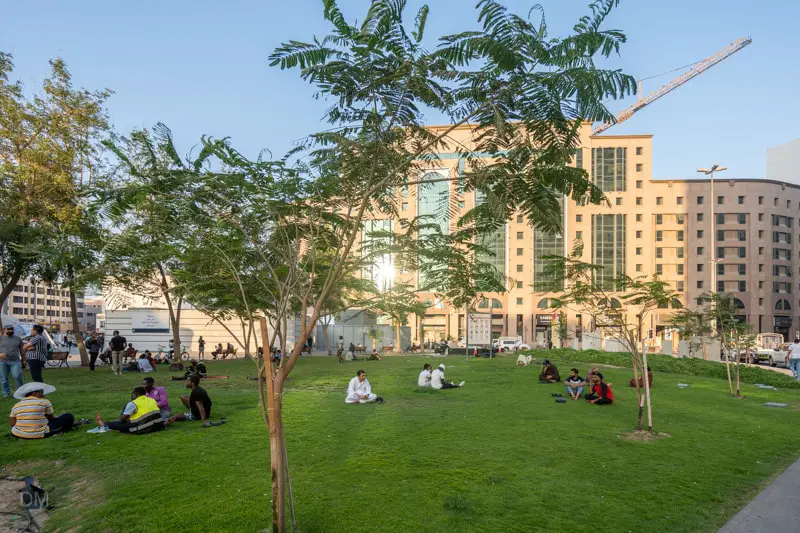
Factors Contributing to Population Growth
Over the past few decades, Dubai has experienced a population boom. Many factors have contributed to the high growth rate. They include:
- A strong economy – One of the primary reasons for Dubai’s population growth is the city’s booming economy. In the past few decades, the city has transformed itself into a global business hub. The city is now home to some of the world’s largest businesses and most successful entrepreneurs. This influx of wealth has created hundreds of thousands of new jobs, drawing people from all over the world to Dubai in search of employment.
- Liberal visa policies – Dubai offers visas to people from all over the world, which has made it a popular destination for immigrants.
- Tax-free income and investment opportunities – Dubai is one of the few places in the world where you can earn tax-free income. This, combined with the city’s many investment opportunities, makes it an attractive destination for people looking to boost their earnings.
- Fantastic infrastructure – To accommodate its rapidly growing population, Dubai has invested billions of dollars into improving its infrastructure. New hospitals and schools have sprung up all over the city in recent years. The city is increasingly becoming more accessible, owing to modern transportation systems like the Dubai Metro and Dubai Tram. An extension to the Dubai Metro Red Line connecting Jebel Ali to the Expo 2020 site opened in 2021. These changes have made the city an appealing place for migrant workers to call home.
- Safety and security – The city is one of the safest in the world, which has made it attractive to families and individuals looking for a place to live.
- Political stability – Dubai is an incredibly stable city politically. It has avoided many of the conflicts and turmoil that have plagued other parts of the Middle East over the years. This stability has made it an attractive place for people from all over the world to live and work.
- A vibrant culture – Another contributing factor to Dubai’s population growth is the city’s vibrant culture. The city is home to people from all walks of life, and this diversity is reflected in its food, music, and art scenes. Large shopping malls such as the Dubai Mall house not only shops, but restaurants, cinemas, and attractions. There is always something exciting going on in Dubai, making it an attractive place to live for people who are looking for a stimulating and fast-paced lifestyle.
- Climate – Dubai’s hot climate and year-round sunshine are also major contributing factors to its population growth.
- Development of new residential areas – Recent years have seen the development of a large number of residential areas, including many with affordable housing options. Established areas such as Bur Dubai and Deira also offer cheap accommodation to the expat population. This has made Dubai more accessible to low and middle-income earners, further boosting the city’s population.

The population boom is the result of a perfect storm of economic growth, improved infrastructure, and a great quality of life. With no signs of slowing down, it seems likely that Dubai’s population will continue to grow for many years to come.
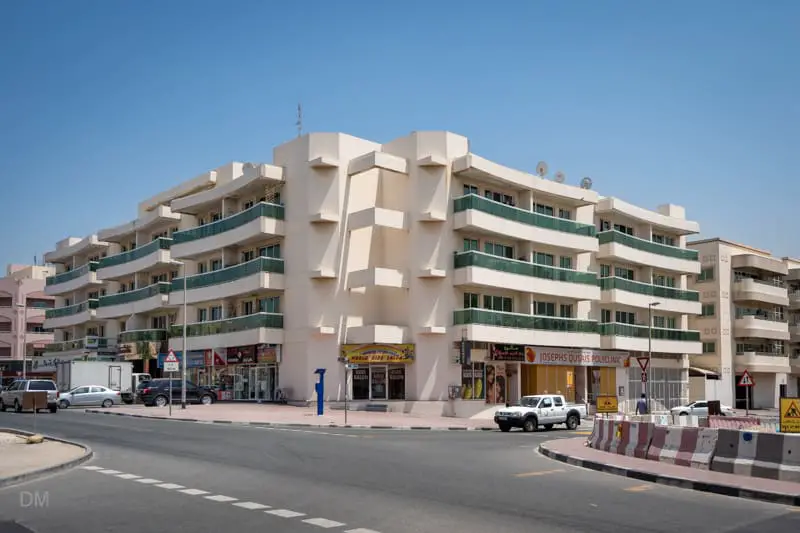
Future Population Growth – Dubai Urban Master Plan 2040
The Dubai Urban Master Plan 2040 is a comprehensive long-term planning initiative that will guide the development of the city over the next two decades. The plan was unveiled in 2021 by Dubai’s ruler Sheikh Mohammed bin Rashid Al Maktoum. It sets out a vision for a sustainable, liveable and inclusive city.
One of the key aims of the master plan is to improve connectivity between different parts of Dubai, making it easier for residents and visitors to move around the city. The plan also includes proposals for new parks and green spaces, as well as more pedestrian-friendly streets and public transport options.
In addition, the master plan includes a range of measures to promote economic growth and attract investment. The plan foresees the resident population to increase to 5.8 million by 2040. The active daytime population is expected to reach 7.8 million.
Overall, the Dubai Urban Master Plan 2040 is an ambitious yet achievable blueprint for the future development of one of the world’s most dynamic cities.
